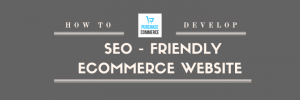Best Ecommerce Inventory and Revenue Models That Win Customers
According to the research forecast, ecommerce transactions will grow globally at more than 20% through 2022 and reach $5.8 trillion. What does this mean?
Ecommerce is gaining a stronghold in the retail world. In the coming years, businesses will opt for different kinds of ecommerce models to grow their business efficiently.
So, what kind of business models make sense? Majority of the ecommerce business models deals between the two distinct user groups – two-sided marketplace – like B2B, B2C, C2C, etc.
However, business models can be categorized based on the type of revenue generation and inventory management. Let’s take a look at each of these business models – ecommerce inventory models and ecommerce revenue models – to get a know-how of how these models help you win more customers.
Ecommerce Inventory Models
Ecommerce revenue models are based on how businesses handle inventory management. They are:
- Drop-Shipping
- Wholesaling and Warehousing
- White-labeling and private-labeling
Dropshipping
Dropshipping means selling products that are shipped to the customer directly from the manufacturer, distributor or supplier, whereas the seller doesn’t keep the stock.
“The most accepted business model is drop shipping, nearly 22-33 % of online retailers use it”
The customer purchases an item from your store at the retail price. The supplier gets notification regarding your order and with them, you will pay the price of the orders in wholesale. Once a supplier receives the order, they ship the item directly to the customer under your business name while you earn the profit margin.
In drop shipping, you don’t have to buy and store bulk stock, which saves you having to invest a lot of money upfront. If you want to provide excellent customer service, then your supplier has to be somebody whom you can trust and shares your values.
The best example for drop shipping will be Inspire Uplift who has a wide range of products with more than 50,000 happy customers. And also, they have more than 1 million followers on their social media page.
Wholesaling and Warehousing
Customer (also a seller) can buy the product in wholesale from the manufacturer or the middleman at a discounted rate, store in their warehouse, and then resell them in a profitable way.
"According to Frost & Sullivan’s, ecommerce wholesale is projected to reach $780 billion by 2020 as compared to ecommerce retail hitting $304.91 billion.”
Wholesaling and Warehousing ecommerce is comparatively simpler when compared to dropshipping.
This is most suited for businesses that are needed to deal with a huge number of exclusive products, who want their business in their control in all the aspects and also to sell the product in huge volumes.
It generally requires a large warehouse and advanced stock tracking software to make a start, which can be a huge investment.
Alibaba is an excellent example of the Wholesaling and Warehousing business model with more than 1 million paying customers and over 200 countries and regions.
White-labeling and private labeling
White-labeling: This is one of the most accessible ecommerce inventory models to the beginner because there isn’t a huge amount of investment.
White label is the most acquired business plan and it is the best way to increase your distribution. You will create a product and it will be sold by others with the addition of some extra features in it.
YouTube is a simple example of white labeling business. Whenever you post a YouTube video you are using their service. They have white-labeled your product and posted your video on their platform with some extra ingredients.
Private labeling: This is the most adopted business model in which you send plans, designs/prototypes to the outsourced manufacturer, and then they manufacture the product for you under your branding. After that, it is shipped either directly to customers or through third-party sellers.
In private labeling, the start-up cost is very low because it doesn’t need any own factory equipment and if you have any troubles with the quality or any production issues with your manufacturer, you can simply switch to the new manufacture.
For example, Target Corporation in the United States does private labeling with companies like General Mills, Frito lay, Archer Farms, etc, where they produce their product under the brand name of Target and sell them.
Ecommerce Revenue Models
Almost all the ecommerce companies generate revenue from direct sales of their products. But apart from this method, what are the other business models that bring profit? Here are some of them as follow:
- Advertising model
- Transaction fee model
- Subscription model
Advertising revenue model
The advertising model is evolving constantly over a period and is used by most of the websites to increase their revenue.
As an ecommerce website owner, you can allow paid advertisement of other brands and products directly in your own website. The advertiser pays for an advertisement according to the traffic your website produce.
Website owner needed to attract more visitors if they want to have advertisers on their site. So, it's only possible when a particular website has a high number of visitors or when you have strong user bases.
In the case of Amazon’s US digital ad revenues, it is expected to grow above 50% in 2019, as it continues to steal share from the Facebook-Google duopoly.
Transaction fee revenue model
Transaction fee model is a commission-based service where ecommerce website owners receive a fee for enabling transaction services that are done through them.
Here both buyer and seller were considered as a customer since sellers use the third-party services to provide services to their buyers.
Sellers pay some fixed fees to service providers for each transaction. And both users are needed to register for ensuring whether they are valid customers.
eBay is the best example of a transaction fee model. The seller needs to pay a transaction fee for each successful sale of their product.
Subscription revenue model
Companies that offer subscription models deliver the customers products and services and charge them a fee for the same at constant intervals. They focus on customer retention over customer acquisition.
Single customer pays multiple payments for prolonged access to a good or service. In ecommerce, subscribers can be both vendors and buyers.
As a vendor, they can make use of the platform’s premium functionality to sell products. As a buyer, they can join your community or club to get access to buying exclusive products from your website while receiving a heft cashback for each purchase.
Beer Cartel is one of the best examples for a subscription-based revenue model. They export selected craft beers from around the globe delivered directly to your door each month. Beer Cartel offers Australia’s longest-running beer subscription service.
Summing Up
We’ve discussed the major ecommerce inventory and revenue models. These details will help you through the process of boosting your sales and establishing a successful ecommerce business.
Your choice of ecommerce business model plays an important role in deciding the success of the business. So, choose them wisely and then look for the best ecommerce website builders to get your customization work done. Purchase Commerce is a next-gen ecommerce platform that has a flexible ecommerce model to adopt your unique needs.









